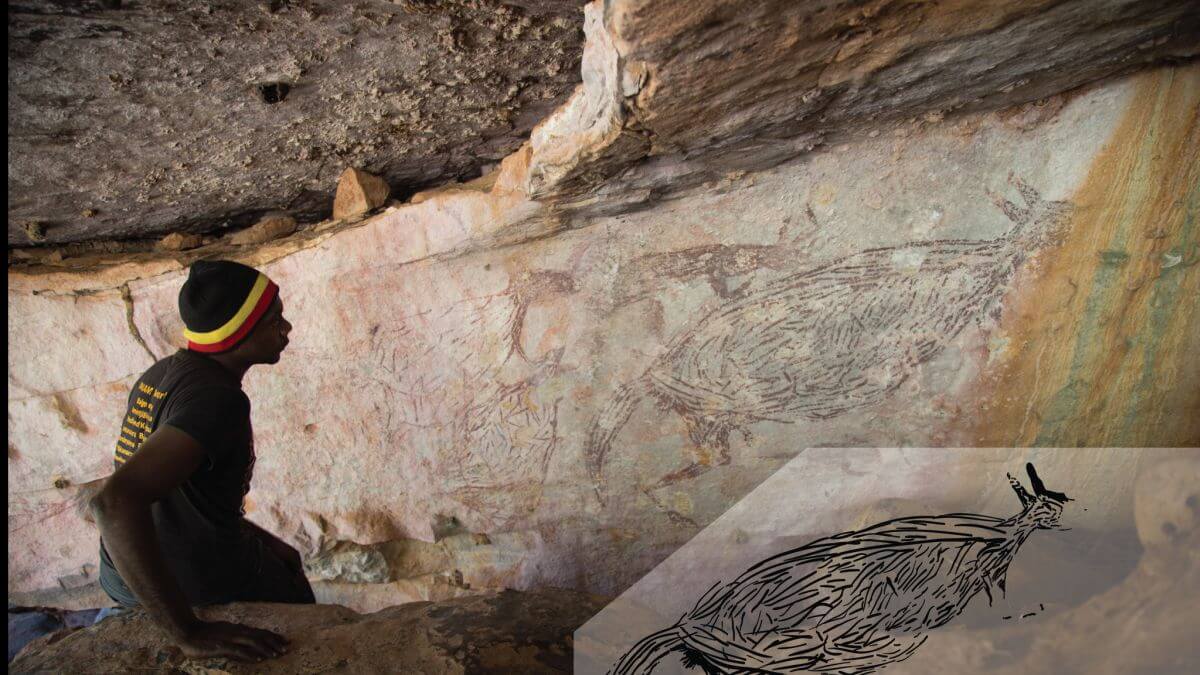
Radiocarbon Dating Finds Oldest Rock Art Painted 17,000 Years Ago
Radiocarbon dating has determined Australia’s oldest known rock art was painted 17,000 years ago.
Australia’s oldest known rock shelter painting has been dated at 17,000 years old in a finding that may unlock greater understanding of Indigenous cultural history.
The kangaroo painting was found in Balanggarra country in the northeast Kimberley region of Western Australia.
It is the oldest known painting still on the wall of a rock shelter in Australia.
Researchers from the University of Western Australia and University of Melbourne worked with traditional owners, using radiocarbon dating on mud wasp nests over and under 16 rock art paintings to determine their age.
The results, published in Nature Human Behaviour, form part of Australia’s largest rock art dating project.
UWA archaeologist Sven Ouzman said the painting would improve our understanding of the history of Indigenous culture.
“This iconic kangaroo image is visually similar to rock paintings from islands in South East Asia dated to more than 40,000 years ago, suggesting a cultural link – and hinting at still older rock art in Australia,” Dr Ouzman said.
“Dating rock art more accurately means we can better understand how Aboriginal people lived from their beginning right up to the present, where rock art is still being made and country managed.
“Indeed this rock painting makes us reconsider what it means to be ‘Australian’, combining everyone’s personal history with the deep time stewardship of the country by Aboriginal people.”
Researchers hope to develop a time scale for Aboriginal rock art in the Kimberley.
Balanggarra Aboriginal Corporation chair Cissy Gore-Birch said it was important to make use of traditional knowledge in preserving Australia’s cultural history.
“It’s important that Indigenous knowledge and stories are not lost and continue to be shared for generations to come,” she said.
“The dating of this oldest known painting in an Australian rock shelter holds a great deal of significance for Aboriginal people and Australians, and is an important part of Australia’s history.”
UWA archaeology chair Peter Veth said the preservation of Kimberley rock art was remarkable, describing it as “one of our most significant cultural estates”.

